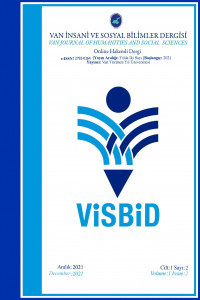Yeni Asur Kralı Esarhaddon’un Kaygı Bozuklukları
Asur Krallığı yaklaşık 1400 yıl Mezopotamya’da egemenlik sürmüştür. MÖ 1000’den sonraki yaklaşık 400 yıl krallığın en parlak dönemleri yaşanmıştır. Bu dönem içerisinde ülke genişlemiş hatta Babil ve Mısır’ın da alınması ile krallık, imparatorluğa dönüşmüştür. Asur Devlet geleneğinde yazının kullanımının fazla olması sayesinde krallık ile ilgili ayrıntılı bilgiler edinilmektedir. Kralların yaptığı seferlerden, günlük mektuplaşmalara, dini metinlerden, ticari belgelere kadar çeşitli bilgilere ulaşılmaktadır. Esarhaddon ile ilgili de çok fazla yazılı metin bulunmuştur. Bu metinler incelendiğinde kralın yönetime gelişinden günlük yaşantısına kadar bilgiler edinilmiştir.
Sanherib’in oğulları tarafından tapınakta suikasta uğramıştır. Bu suikast sırasında sürgünde olan Esarhaddon zorlu bir süreç sonucunda krallığın başına geçmiştir. Esarhaddon kral olduktan sonra çok fazla sorun ile uğraşmıştır. Babasına hainlik yapanların tespit edilmesi, tahttı ele geçirmek isteyen ailesi dışındaki Sasi isimli bir kişi bu sıkıntılardan bazılarıdır. Kralın en büyük sıkıntıları ise fiziksel ve psikolojik rahatsızlıkları olmuştur. Bu rahatsızlıkları giderebilmek için birçok uygulamada bulunmuştur. Esarhaddon bu süreçte oluşan kaygılarını yönetebilmek için de ritüellere ve kâhinlere başvurmuştur.
Anahtar Kelimeler:
Yeni Asur, Esarhaddon, Sanherib, Kaygı, psikoloji.
Anxiety Disorders of the Neo Assyrian King Esarhaddon
The Assyrian Kingdom ruled in Mesopotamia for about 1400 years. After 1000 BC, the heyday of the kingdom was experienced for about 400 years. During this period, the country expanded and even with the conquest of Babylon and Egypt, the kingdom turned into an empire. Thanks to the high use of writing in the Assyrian State tradition, detailed information about the kingdom is obtained. Various information can be obtained from the expeditions of the kings to daily correspondence, from religious texts to commercial documents. Much written text has also been found about Esarhaddon. When these texts are examined, information has been obtained from the arrival of the king to his daily life.
He was assassinated in the temple by the sons of Sanherib. Esarhaddon, who was in exile during this assassination, became the head of the kingdom as a result of a difficult process. Esarhaddon dealt with a lot of problems after he became king. Detection of those who betrayed his father, and a person named Sasi who wanted to seize the throne, other than his family, are some of these troubles. The biggest troubles of the king were physical and psychological disorders. It has been found in many applications to eliminate these ailments. Esarhoddon applied to rituals and oracles in order to manage his anxieties in this process.
Keywords:
Neo Assyrian, Esarhaddon, Sanherib, Anxiety, psychology.,
___
- Coşkun, İ., (2022a), “Asur Veliaht Antlaşmaları”, Sosyal ve Beşeri Bilimler Araştırma, Metodoloji ve Değerlendirme, Livre de Lyon.
- Coşkun, İ., (2022b), “Yeni Asur Dönemi Iı. Asurnasirpal/Ziyafet Steli” Socrates Journal of Interdisciplinary Social StudiesYear 8, Volume 22 , 1-14.
- Coşkun, İ., (2019), Yeni Asur Dönemi Kraliçeleri ve Kraliçe Libbali-Šarrat’ın Zaferi, Current Debates on Social Sciences Human Studies 3, Bilgin Kültür Sanat Yayınları, Ankara.
- Grayson A, K, Assyrian and Babylonian Chronicles (Texts from Cuneiform Sources 5), New York, 1975, Chron. 1, Col. I: 29–31.
- Leichty, E. (2011), The royal inscriptions of Esarhaddon, King of Assyria (680-669 B) (Vol. 4). Penn State Press.
- Melville, S. (1999), The Role of Naqia/Zakutu in Sargonid Politics= SAAS IX. In: Helsinki: Helsinki University Press.
- Olmstead, A. T. E. (1923). History of Assyria: University of Chicago Press.
- Radner, K., (2007) “The Trials of Esarhaddon: the Conspiracy of 670 BC”, in: Assur und sein Umland (Isimu: Revista sobre Oriente Proximo y Egipto en la antiguedad 6), Eds. P. Miglus, – J. M. Cordoba, Madrid, s. 165–184.
- Simo Parpola, Kazuko WatanabeNeo-Assyrian Treaties and Loyalty Oaths, Kazuko Watanabe 2. cilt/State archives of Assyria.
- SSA (1987 -), State Archiues Of Assyria 1-20, Helsinki.
- Svärd, S., (2012), Power and Women in the Neo-Assyrian Palaces.
- Ökse, A. T. (2017), Eski Önasya’da Darbeler Ve Sonuçları. Uluslararası 15 Temmuz Darbeler Sempozyumu 3. Cilt, 245.
- Ökse, A. T. (2021), Eski İnsanın Duygularının Arkeolojik Verilere Ve Yazılı Belgelere Yansıması. Tüba-Ar Türkiye Bilimler Akademisi Arkeoloji Dergisi, (29), 153-176.
- Başlangıç: 2021
- Yayıncı: Van Yüzüncü Yıl Üniversitesi
Sayıdaki Diğer Makaleler
Kültürleşme ve Turizm İlişkisi
Ahlat Selçuklu Meydan Mezarlığı’nda Sanatkâr Hasan Bin Yusuf ve Eserleri
Gürcistan-Ahaltsihe (Ahıska) Kale-Kentinin Türk-İslam Eserleri Açısından Bir Değerlendirmesi
Akgöl (Özalp-Van) ve Çevresinin Doğal Ortam Özellikleri, Ekosistem İçindeki Önemi ve Korunması
Irk Kavramının Sosyal İnşası: Amerika’da Irk Sorunu’nun “Crash” Filmi Üzerinden Analizi
Yeni Asur Kralı Esarhaddon’un Kaygı Bozuklukları
Towards A Conception of Super-Deterministic Meta-Ontology in The Universe: An Islamic Perspective
Mehmet Şirin DEMİR, Ömer Aytaç AYKAÇ, Suleyman KASAP, Aydın GÖRMEZ, Ahmet YAYLA, Cesim ALADAĞ
Seda KARAÖZ ARIHAN, Mehti DOĞAN
